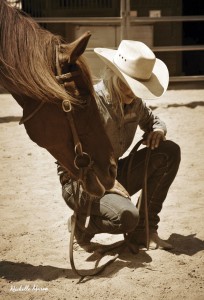According to Wikipedia, listening is defined as a communication technique that is used in training and conflict resolution. In order to be an effective listener, you must fully concentrate, understand, respond and remember what is being said. How well do you listen?
Developing effective listening skills builds a solid foundation with benefits that filter through every aspect of your life, from professional to personal. It isn’t easy being a good listener—it takes a desire to begin with because it is a lot or work.
While listening, we have to suspend our thoughts and be aware of any emotions that may be triggered that are interfering with our attention. For instance, do you feel the need to defend, argue or be right? Are you irritated, frustrated or uninterested? Pay attention to those feelings; you might find that your ego is getting in the way to becoming a better listener.
 You may not have made the connection, but how well you listen to people—not only verbally, but visually as in body language—has a direct correlation to how well you listen to your horse. It takes being quiet, listening and observing.
You may not have made the connection, but how well you listen to people—not only verbally, but visually as in body language—has a direct correlation to how well you listen to your horse. It takes being quiet, listening and observing.
If you have a desire to learn, combined with a desire and ability to listen, no one can stop you. If you have a wish to learn, yet have not developed an ability or desire to listen effectively, no one can help you.
Generally speaking, your horse tells you what he is going to do before he does it. A horse that is reluctant to move forward may repeatedly drop out to a walk or simply stop. If you are a responsive rider, you can feel when the slow horse is getting ready to break to the walk or stop and you can urge him forward with your legs before that happens. Your legs are the gas pedal. If he is breaking to 5 MPH and you want 20 MPH, then you have to feel this and exert enough pressure to get him to the 20 MPH before he breaks his speed. The reactive rider waits until the horse loses his speed or stops entirely before asking him to move. The correction is made after the offense, which is too late. Also, the rider may not be using his legs with enough pressure to keep the horse moving at 20 MPH. You cannot increase your car’s speed to 20 MPH if you are only using enough pressure on the gas pedal to go 5 MPH. So, the horse understands that he can stop without consequences and will continue to do so. Can you feel the amount of pressure you are using? If you are listening, your horse will tell you what the correct amount is by moving forward.
Or, you may have a horse that is over-enthusiastic. When you ask for a walk, he trots or just breaks into the lope. If you are listening, you can feel your horse build before he breaks into the next gait. I know it’s counter intuitive, but when the horse builds, the responsive rider relaxes his body, sits deeper in the saddle, and softens his back in order to be the change he wants his horse to make. If his horse doesn’t respond to the change in energy, then he is already seated properly and can safely one-rein the horse quickly to reinforce his request to slow down. A reactive rider allows the horse to increase speed and typically panics by pulling on two reins. When pulling on two reins, the rider braces, stands up in the stirrups, and pulls himself forward—which tells the horse the race is on. Your horse is listening to your body language and continues to speed. The rider is now unbalanced, and a wreck is waiting to happen. The rider may get the horse stopped today, but perhaps not tomorrow. A great opportunity for training has passed by. Your horse will make mistakes, this is expected. And once he does, if you are listening, you can feel it coming and are able to respond quickly with the appropriate correction.
When performing groundwork, your horse tells you when to release the pressure through subtle changes such as a soft eye, a slight lowering of the head, a deep sigh, how he carries his tail, a reduction in speed. All of these are signs he may give to let you know he is beginning to understand the lesson you are teaching. Since horses learn from the release and not by pressure, timing is critical. Will you release at that time? Sometimes it’s releasing at a thought to support his effort. Are you watching?
If you want to be listened to, you should put time into listening. It’s something I work on every day.
Leave a Comment
All fields must be filled in to leave a message.